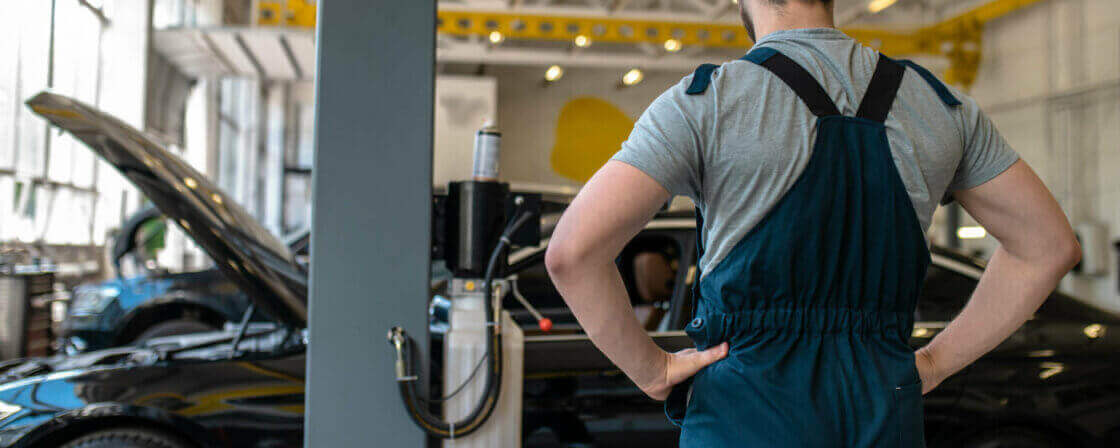Main and secondary gainful activities
As a self-employed person, you can work as a main or secondary earner. In the case of a main activity, this is de facto “full-time” work, similar to employment. If you set up your business in this way, you must pay at least the minimum social security and health insurance contributions from the first month of your business. However, if you expect an income of tens of thousands or hundreds of thousands, it is worth paying higher amounts right from the start, or at least putting money aside so that you are not surprised by high arrears later.
Are you solving a similar problem?
Not sure how to do your taxes properly so you don't get it wrong?
We can help you navigate the law, whether it’s dealing with a specific tax situation, preparing for an audit by the tax authority or defending yourself in court.
I want to help
- When you order, you know what you will get and how much it will cost.
- We handle everything online or in person at one of our 6 offices.
- We handle 8 out of 10 requests within 2 working days.
- We have specialists for every field of law.
If we evaluate the business purely from the point of view of paying taxes, it is worthwhile to have the business as a secondary activity, i.e. rather as a supplementary income. According to the law, self-employment is considered secondary if:
If you have set up your business as a secondary activity, your compulsory payments and levies will be reduced quite significantly, or you can avoid paying them altogether.
Tip for article
Do you want to become independent at work and adapt your work pace to your needs? Are you planning to work in an industry where employment is almost impossible? Are you looking for some extra income? In all of these cases, setting up a trade may be a good idea.
Tax obligations
As a self-employed person, you are required to pay taxes on your income and file a tax return each year. However, you don’t pay everything that lands in your account, only the difference between your income and expenses. The income tax rate is 15%. As for expenses, you can either keep all receipts and invoices and claim the actual expenses, or the law offers you the option of choosing a flat-rate expense.
Another option for those who run their main business is to apply the so-called flat-rate tax, which we will look at in more detail below.
Income from:
- the exercise of an independent profession,
- rental of property,
- sole proprietorship,
- agricultural production, forestry and water management,
- the use or grant of copyright,
- any other business with entrepreneurial authorisation.
Expenditure lump sum
Lump sum expenses are sometimes confused with a flat rate tax, but this is quite different. A flat-rate expenditure replaces the complicated overview and calculation of individual actual expenses (which, on the other hand, are worthwhile if the actual expenses exceed the flat-rate ones, for example, when goods are resold). Instead of collecting receipts, you can choose one of the following rates depending on the type of business:
- 80% of income applies to craft trades, agriculture and forestry;
- 60% of income for other trades(free, tied and licensed);
- 40 % of income from activities for which you do not have a trade licence (for example, income from copyright or freelance activities and businesses under special legislation).
If your expenditure exceeds your income, this is a loss, by which the tax base is then reduced in future tax periods.
Tip for article
Are you considering whether to choose a trade or a job? How about trying both? We have discussed the advantages of such a combination in our article.
Flat tax
The flat-rate tax can be applied by businesses from 2021. It is mainly sought by those who want to simplify their lives with administration and get rid of tax returns. It’s worthwhile for people who don’t usually deal much with deductible items like mortgage interest, gifts or pensions on their tax return, don’t claim child tax credits and so on.
The flat-rate scheme involves registering by 10 January of the relevant year and then paying the same tax payment each month as set by the state. The following year you do not have to fill in tax returns, insurance and social security statements and you cannot incur any annual arrears. Does this sound like an ideal situation? There are some disadvantages, after all. You must keep an eye on your income, as you must not exceed an annual income of CZK 2,000,000. But not everyone can do that. A bigger complication arises when you have to prove your income, for example, for the purposes of a mortgage or other loan. Normally, entrepreneurs do this through a tax return, but you do not file it in the flat-rate regime. So you may not get along with some banks at all, while with others you may have to find alternative ways of proving your income.
There are also three flat-rate tax bands, namely CZK 8,716 per month, CZK 16,745 per month and CZK 27,139 per month. The amount is then payable by the 20th day of the calendar month for which the advance is paid.
Tip for article
What is the Trade Register and what is it for? We have focused on all this in our article.
Advances on health insurance in 2025
The minimum deposit for health insurance has increased to CZK 3,143 in 2025. The amount changes from the January payment onwards. However, if you pay more than the legal minimum, you don’t have to worry about anything until your tax return. If you forget to change the minimum deposit amount at the bank, the health insurance staff will usually notify you of the underpayment.
Self-employed people who work as a sideline do not pay the minimum health insurance advance. Simply submit an income and expenditure statement to your health insurance company once a year and then, if necessary, pay the premium at once according to your actual income.
Tip for article
Health and social security debt can build up quickly. How exactly does it work if you’re self-employed and what if your employer doesn’t pay your insurance? Find out in the next article.
Social security contributions in 2025
Social insurance contributions for 2025 are set at a minimum of CZK 4,759. For social insurance, the advances change in the month in which you submit your statement for the year, usually in April. Either you set your new minimum advance payments higher or the ones calculated on the basis of your income and expenditure statement for the previous year. As with health insurance, if you’re already paying more than the minimum, you don’t need to worry.
For self-employed workers who carry out secondary activities, the minimum advance payment for social insurance will rise to CZK 1,496 in 2025. However, if they are starting a business, they will pay no advance for the first year.
Tip for article
Unfortunately, not every business is successful or promising. We have discussed how to dissolve a business legally, temporally and financially in our article.
Summary
Self-employed people can run a business as a main or secondary activity, with secondary activity meaning lower or no compulsory payments and contributions. In the case of the main activity, minimum social security and health insurance contributions must be paid from the first month. Income tax is 15%, with the option of applying actual expenses or a flat-rate (80%, 60% or 40% depending on the type of activity).
The flat-rate tax, available from 2021, allows you to pay a fixed amount per month without having to file a tax return, but is limited to an annual income of up to CZK 2 million. In 2025, the minimum monthly payment for health insurance is CZK 3,143 and for social insurance CZK 4,759. Self-employed women with a secondary activity pay a minimum of CZK 1 496 in social insurance, while in the first year of business they are exempt from the advance payments.
Frequently Asked Questions
What basic levies do self-employed persons have to pay?
Every self-employed person is obliged to pay health and social security contributions. In the case of the main activity, these contributions are compulsory from the first month of business, at least in the minimum amount (in 2025 the minimum advance payment for health insurance is CZK 3,143 and for social insurance CZK 4,759). In the case of secondary activities, the payments are usually lower or no advance payments are made at all if the income does not exceed the statutory limit.
What taxes do self-employed persons pay and how are they calculated?
The main tax liability is personal income tax, which is 15% of the tax base. This is calculated as the difference between income and expenditure. The self-employed person can choose whether to apply actual expenses or a flat rate (40%, 60% or 80% depending on the type of activity). An alternative is a flat-rate tax, which combines taxes and contributions into one monthly payment.
What is included in the regular payments for self-employed persons?
Regular payments for self-employed persons include monthly advances for health and social insurance and, if applicable, a flat-rate tax if the entrepreneur has opted for this scheme. These payments must always be made on time – usually by the 20th of each month. In addition, you need to take into account the annual tax return and reports for the insurance company and the Social Security Agency if you are not in the flat-rate regime.
What are the advantages and disadvantages of a flat tax for self-employed persons?
The flat-rate tax simplifies administration – the entrepreneur pays one fixed amount per month and does not have to file tax returns or reports to the authorities. The advantage is clarity and time saving. The disadvantages may be the limitation of income up to CZK 2 million per year and the inability to claim certain tax credits or deductions (e.g. for children, mortgage or gifts).
How do the levies differ for self-employed persons with main and secondary activities?
The difference between main and secondary activities has a major impact on the amount of contributions for self-employed persons. In the case of main activities, contributions must be paid from the start of the business, whereas in the case of secondary activities (e.g. if the entrepreneur is also an employee, student or pensioner), they are often paid only according to the actual income after the annual statement has been submitted. In addition, it is often not possible to pay any advance payments at all in the first year of the secondary activity.




